My son goes to sleepaway camp. This summer would be his sixth. For months we have been unsure whether camp would occur, whether it would be safe to send him or if we would even want to. With all the unknowns, his camp community has been there for us over the past two months. The camp staff knew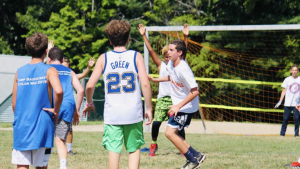 everyone was at home and in need of human connectivity. Through weekly Friday night Instagram Live get-togethers, bi-weekly Zoom workouts or the Xbox NBA2k tournament for his age group, my son has been staying connected to Camp Bauercrest and his friends. And he’ll need it, as they just canceled the summer session.
everyone was at home and in need of human connectivity. Through weekly Friday night Instagram Live get-togethers, bi-weekly Zoom workouts or the Xbox NBA2k tournament for his age group, my son has been staying connected to Camp Bauercrest and his friends. And he’ll need it, as they just canceled the summer session.
The technological opportunities at our disposal have made this unique situation somewhat bearable. Like my son, other children are using it to be a part of their school, sports or religious groups and for adults, perhaps it’s allowed for local neighborhood camaraderie, keeping up with your morning workout group or enabling family reunions. The methods have changed from in-person to virtual, but over the past couple of months many have found these communal connections are what’s kept them going.
Staying connected is so important that in mid-April the state issued an Executive Order prohibiting all internet and phone carriers from terminating services for non-payment until the public health emergency has cleared. Whether one is going online and reading the most updated news sites, texting with friends and family on a phone or tablet or going “old school” by making a telephone call, these utilities have become the be-all, end-all of communicating during isolation. Those at home during the pandemic have also witnessed an amazing virtual journey connecting through video conferencing and meet-up platforms.
One never would have imagined Saturday nights, when most looked forward to a night out with others, could be fulfilled in cyberspace. Since isolation began, the opportunity to play cards online has become something Jessica Rubinstein and her husband look forward to. Hearts is a card game they have enjoyed playing with friends for years. They’d get together with their friends periodically, but the Trickster Cards app has changed all that.
“We actually play more often now that we’re in this quarantine than we do normally because it’s easier than finding time to get together,” shares Rubinstein. “We’re just not having dinner together like we used to.”
The app offers an opportunity to video conference while playing and also allows you to create your own private playing room. While the in-person interactions are missed, Rubinstein says it’s created a very genuine, fun experience and allows them to still have a fun night “out.”
For the school-age child, apps like House Party allow them to chat with friends or play virtual versions of traditional board games like Pictionary and Apples to Apples. Their schools are also working hard to create social contact. Dr. Patty Fagin, Head of School at Stuart Country Day, has been working with her staff to keep their school community connected while they teach and learn from home. Luckily, she says, they have always been a 1 to 1 Ipad and laptop school, so the children were already set up not just for academic learning but also to sustain social interactions.
“Today, if you look into any class and see the faces of 10 to 15 kids on Google Meet, seeing each other and talking to a faculty member, it makes a huge difference,” says Fagin.
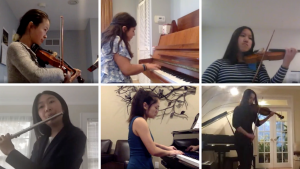 In fact, today’s media platforms are allowing the show to go on, even if the curtain can’t go up. Google Meet recently provided an opportunity for Stuart students to host an evening instrumentalist performance and some Upper School students competed in a lip sync battle through a live Instagram takeover. For other interaction, some children have been working to rebuild the school on Minecraft so they can virtually hang out there. It’s a balancing act, doing so much via screens, but Fagin recognizes it is the main way for them to communicate with each other.
In fact, today’s media platforms are allowing the show to go on, even if the curtain can’t go up. Google Meet recently provided an opportunity for Stuart students to host an evening instrumentalist performance and some Upper School students competed in a lip sync battle through a live Instagram takeover. For other interaction, some children have been working to rebuild the school on Minecraft so they can virtually hang out there. It’s a balancing act, doing so much via screens, but Fagin recognizes it is the main way for them to communicate with each other.
“The problem with this generation is if they’re not in a structured activity they’ll be on screens anyways doing something else that may not be as positive or safe,” she notes.
Across town, Littlebrook Elementary School is also trying to utilize technological advantages in a positive way for its students. Principal Luis Ramirez misses the days when he could see everyone around the building and physically 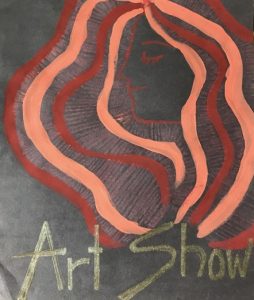 going into classrooms to say hello. Instead, he pops into their classes on Zoom.
going into classrooms to say hello. Instead, he pops into their classes on Zoom.
“The looks on their faces are priceless, I really miss them,” sighs Ramirez.
Traditions are a big part of his school community, so Littlebrook is working hard to maintain some. Though students can’t bring their parents to school to show off their artwork this spring, Ramirez insisted on a proper Art Show.  The students have each created artistic replicas, interpretations with rainbows and other pieces throughout remote schooling with guidance from their art teacher, Mrs. Dell. This week, they were tasked with curating an art show from home. Students were asked to handmake an invitation, design a floor plan of their work and to display it throughout the house. The Art Show is now being shared for all Littlebrook families to enjoy via the Parent Teacher Organization’s Konstella App.
The students have each created artistic replicas, interpretations with rainbows and other pieces throughout remote schooling with guidance from their art teacher, Mrs. Dell. This week, they were tasked with curating an art show from home. Students were asked to handmake an invitation, design a floor plan of their work and to display it throughout the house. The Art Show is now being shared for all Littlebrook families to enjoy via the Parent Teacher Organization’s Konstella App.
Later in the school year, Ramirez is hoping to virtually create another favorite elementary custom, field day. It’s not the same as watching the children compete on fields together, but if they can coordinate a plan, he is thankful telecommunications advances like Zoom will allow them to stay connected through this experience.
If there’s one new word that will be coined from the technology that saved the day during the pandemic it will be “Zoom.” It’s become an acceptable verb, as people say “Let’s Zoom later!” the way “Google it” was coined as a research term years ago. And it’s no wonder, as the video-conferencing platform is said to have seen usage increase from 10 million to more than 300 million in the past three months. Though it was a reality for those that lived during the Spanish Flu, it’s nearly impossible for most of us to imagine getting through these times without having a smartphone, tablet or computer to connect us. Weekly friend Happy Hours, large birthday “gatherings” and more intimate catch-ups have all been made possible thanks to Zoom, Facetime and other applications like Microsoft Teams.
Rachel Lesser has a great reputation amongst friends for baking delicious homemade treats. She always shared her creations but had never thought to use video conferencing to teach others how to bake themselves. Home isolation changed that.
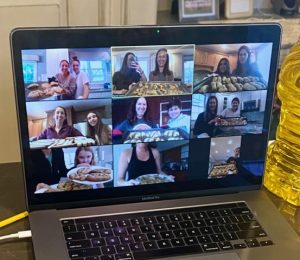 “A friend’s daughter wanted to learn how to make my chocolate chip cookies in quarantine. I taught her one day on Zoom and then it grew from there,” explains Lesser. “It’s fun to share my favorite sweet recipes with friends and their kids from all over.”
“A friend’s daughter wanted to learn how to make my chocolate chip cookies in quarantine. I taught her one day on Zoom and then it grew from there,” explains Lesser. “It’s fun to share my favorite sweet recipes with friends and their kids from all over.”
A week in advance she emails the necessary ingredients for all to add to their shopping lists but saves the step-by-step directions for the Saturday afternoon Zoom. One friend may overbake her cookies, another will learn her bundt pan isn’t actually non-stick, nonetheless friends from Princeton to Newtown, Westchester to Puerto Rico are baking together.
“It’s also nice to see everyone even if it is virtually. We talk, they ask questions and we all have sweet treats to share with our families,” Lesser adds.
Beyond the intimate moments, technology is allowing our hometown community to benefit via the internet, email and video opportunities keeping locals connected to others with similar interests, to what’s open around town, and to the latest news and information regarding COVID-19. One neighbor recently mentioned (from a social distance) that she had discovered a Drop-in and Knit group on Princetoncovid.org. So instead of knitting a scarf home alone, she joined a virtual social hour of knitting and sharing through the library.
Princetoncovid.org, a collaboration of Princeton Public Library, the Municipality of Princeton and Princeton Public Schools was conceptualized in just two days and launched on March 17, 2020 to keep everyone abreast. It’s been updated nearly every day since. Putting all of the resources and needed links in one place makes it easy for the public to learn about the myriad of local virtual activities and offerings, to reach out for help and stay on top of the most current rules and recommendations.
“We wanted to be as open and transparent as possible about sharing the data we are tracking about the number of positive cases and tests within Princeton and to explain why the restrictions that have been put in place are necessary,” shares Mayor Lempert. “Part of the challenge is keeping up with all the new information each day, and we wanted to make that easier for residents.”
Our local government has also been increasing its use of social media. Its accounts on Facebook, Twitter and Instagram pre-date the COVID-19 outbreak, but they have been important resources lately to update with COVID-related information, safety-tips and restrictions. The most current state and local information can also arrive each day to your inbox through Princeton’s Daily COVID-19 Update email created with Lempert and other municipal staff.
So much of our society has been physically shut down, but if you look for it, a lot remains virtually accessible. Whomever it is you seek to connect with, there’s probably a way to do it. So I challenge you to go online (when you’re done reading this issue!) and Google your favorite gym, you might be able to Zoom a class later today! Text your aunt and ask if she’s around to Facetime so you can see her smile. Create a Google Hangout with your college friends to share favorite Netflix shows and plan to watch that night, together (yes, you can do that, too!). We may be separated by space, but thankfully we have a means to stay connected.
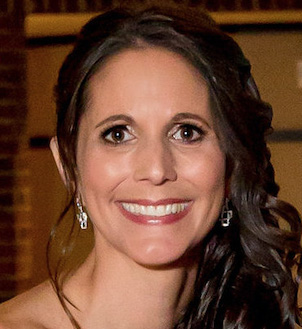
Lisa Jacknow spent years working in national and local news in and around New York City before moving to Princeton. Working as both a TV producer and news reporter, Lisa came to this area to focus on the local news of Mercer County at WZBN-TV. In recent years, she got immersed in the Princeton community by serving leadership roles at local schools in addition to volunteering for other local non-profits. In her free time, Lisa loves to spend time with her family, play tennis, sing and play the piano. A graduate of the S. I. Newhouse School of Public Communications at Syracuse University, Lisa was raised just north of Boston, Massachusetts but has lived in the tri-state area since college. She is excited to be Editor and head writer for Princeton Perspectives!
